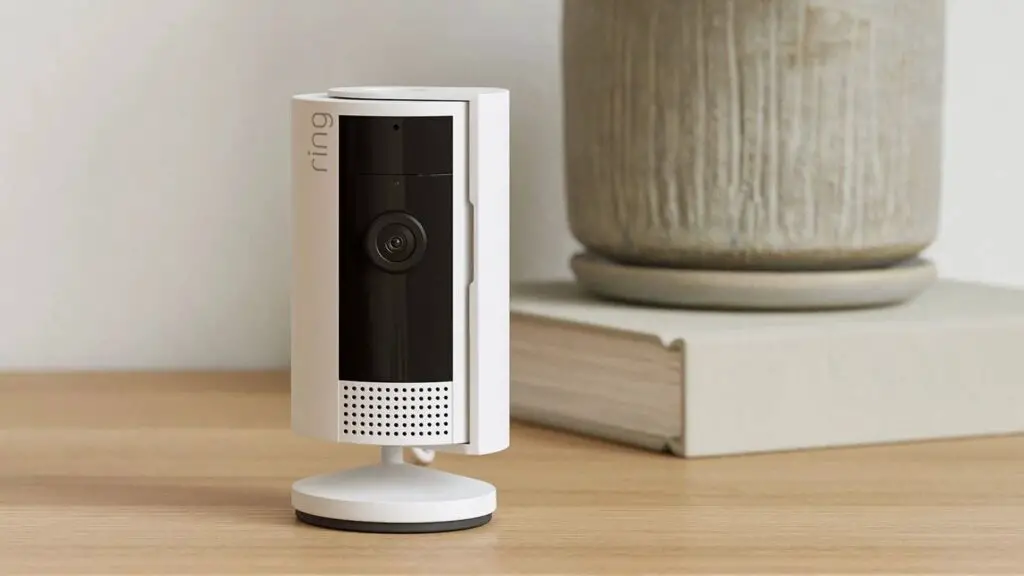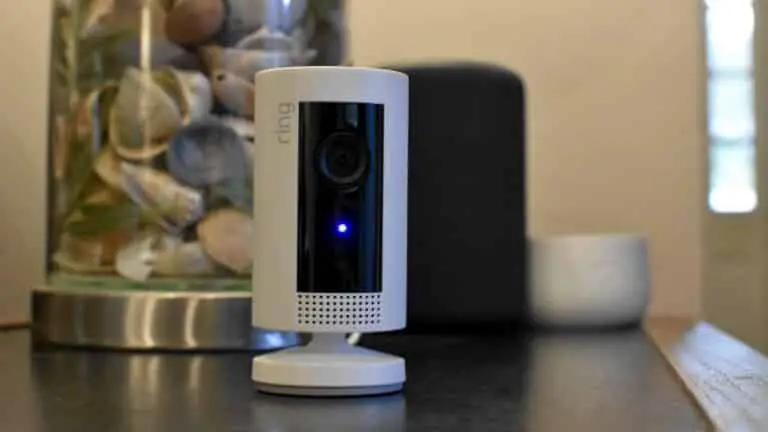Introduction
In recent years, home security systems have witnessed a rapid surge in popularity, with smart devices at the forefront of this technological revolution. Among the most prominent contenders is the Ring camera, an innovative surveillance tool designed to offer homeowners a heightened sense of security and peace of mind. However, along with their undeniable benefits, these devices have also sparked concerns over privacy invasion, particularly with regards to their audio recording capabilities.
Understanding the extent of audio recording by these devices is crucial as it touches upon fundamental issues of privacy and data security. Ring cameras, manufactured by Amazon-owned Ring Inc., are widely known for their video monitoring functionalities, allowing users to view real-time footage of their surroundings. But it is the audio feature that has prompted significant controversy.
Additionally, there have been allegations of data breaches and unauthorized access to stored audio files, raising questions about the robustness of Ring’s security measures. Proponents of Ring cameras argue that audio recording serves as a crucial tool in deterring crime and providing valuable evidence in case of security incidents. They maintain that users are in control of the audio feature and can choose to disable it at any time, mitigating privacy concerns.

Do Ring cameras record conversations?
If you didn’t change any settings on your Ring device, it automatically records video and audio as soon as it detects motion. It continues for two minutes or until it no longer detects motion. To stop the Ring from recording audio: Open up your Ring app.
Public discussion has surrounded Ring cameras’ ability to capture conversations. Ring cameras may record video and audio within their range. To establish if these gadgets can record conversations, you must understand their settings and functions.
Ring cameras record audio and video by default, providing a complete monitoring experience. This function can help identify intruders and unusual activity and provide context to recorded events.
However, audio recording regulations differ by jurisdiction, and it may be illegal to record conversations without consent. Ring allows users to disable audio recording because of this legal problem. The Ring app lets users change camera settings and choose to capture audio during videos.
Do Ring cameras always record audio?
Most video doorbells don’t record audio continually. If you leave the Ring on the default setting, it starts recording audio and video simultaneously whenever its built-in motion detector is activated, and then continues for up to 2 minutes or until motion is no longer detected.
Ring cameras don’t always record audio in default mode. Ring cameras can capture audio, but user settings govern this. Most Ring cameras record video and audio by default for complete monitoring. The camera will collect video and audio within its range when motion is detected or manually activated.
Ring respects privacy and lets users disable audio recording. The Ring app or online site lets users turn on or off audio recording for their Ring cameras according to their preferences and local laws.
Users can customize audio recording settings to balance security and privacy in the camera’s observation area. Users can enable audio recording to learn more about camera-captured events or disable it to avoid accidentally capturing private chats or sensitive exchanges.
Does Ring camera detect sound?
The ever-popular Ring cameras unfortunately don’t offer sound-detected recording. However, there are select cameras from other popular brands that do.
Ring cameras detect sound for surveillance. Audio detection enhances the camera’s visual surveillance, giving homeowners a more complete security option.
Ring cameras may detect sounds within range when audio detection is active. Conversations, footsteps, alarms, barking dogs, and other loud noises can trigger the camera’s audio sensor. The camera can notify connected cellphones and tablets of the sound.
Ring cameras’ audio detection improves security. It can alert people to security threats or unusual activity that the camera may not see. The camera may inform users if it hears a cracking window or someone tampering with it.
How far can Ring camera hear?
A recent investigation by Consumer Reports found that the Amazon Ring Video Doorbell 3 and the Arlo Ultra video doorbells can record audio as well as video to a range of between 20 and 25 feet—a revelation that means audio surveillance can occur even when we can’t see the video cameras.
The Ring camera’s hearing range depends on its model, the environment, and the user’s audio detection settings. Ring cameras usually have microphones that may capture sounds nearby.
In a clear, unobstructed setting, most Ring camera models have an audio range of 15 to 30 feet (4.5 to 9 meters). This range can catch audio from neighboring locations like a porch, driveway, or backyard, where the camera is commonly put to watch home entrances and environs. The audio range may change due to environmental variables.
Background noise, ambient sounds, and impediments between the camera and the sound source can impact audio detection and recording. The Ring app or online interface lets users modify audio sensitivity to improve audio collection and record important noises. By increasing sensitivity, the camera may detect sounds from farther away, but ambient noises may trigger more false warnings.

Can I turn off the audio on my Ring camera?
One of the privacy features on Ring devices allows you to disable the audio streaming and recording functions of your device.
Yes, you can turn off the audio on your Ring camera. Ring recognizes the importance of user privacy and provides the flexibility for users to disable the audio recording feature if they choose to do so.
To turn off the audio on your Ring camera, follow these steps:
Open the Ring app: Launch the Ring app on your smartphone or tablet. Ensure that you are logged in with the account associated with your Ring camera.
Access Camera Settings: Tap on the camera device you want to modify to access its settings.
Disable Audio: Within the camera settings, look for the option related to audio or sound settings. The wording may vary depending on your camera model and the version of the Ring app, but you should find a toggle or switch to enable or disable audio recording. Simply turn off the audio recording feature to disable the microphone on your Ring camera.
Save Changes: Once you have disabled the audio recording feature, make sure to save your changes.
By turning off the audio recording, your Ring camera will no longer capture sound along with the video footage it records. This is particularly useful if you have privacy concerns or if you want to comply with local laws that restrict audio recording without the consent of all parties involved.
How long does Ring keep recordings?
In general, depending on what country you live in, recordings that are in the Cloud/Ring app are kept for at least 30 days before they’re deleted. In the US, videos are stored for up to 60 days .It the EU/UK, the maximum storage time is 30 days.
Ring keeps camera video recordings for a specified time, depending on the camera, subscription package, and area legislation. General Ring recording retention guidelines:
Ring stores video recordings for 60 days on the free Basic Plan. The recordings are automatically erased and unrecoverable after this time.
Ring Protect Plans: Ring Protect Basic and Ring Protect Plus subscribers get longer recording retention. Ring keeps video footage for 30 or 60 days, depending on the plan.
Some Ring cameras have “Snapshot Capture,” which takes snapshots throughout the day. These pictures are usually stored for 7 days, regardless of membership plan.
Ring keeps video records for the given time, but audio recordings (if enabled) may be kept differently. Ring’s official literature or support can provide the latest recording retention policy.
How do I use the audio on my Ring camera?
Enable sound by selecting the speaker button (available for doorbells and cameras). Use Two-Way Talk by selecting the microphone icon (available for doorbells and cameras). Your browser may ask you to give ring.com permission to access your microphone. If this happens, select Allow.
Ring camera audio improves home security and communication. The process may vary depending on your Ring camera model and Ring app version. Ring camera audio usage instructions:
Enable Audio
Ring camera audio recording must be enabled before using the audio feature. Start the Ring app on your phone or tablet and select the camera device. Ensure audio recording is enabled in camera settings.
Two-way chat
Most Ring cameras provide “Two-Way Talk” to connect with people nearby via the microphone and speaker. Two-Way Talk is enabled by tapping the microphone icon in the Ring app’s camera live view. Hold the microphone symbol while speaking and release it when done. The camera’s speaker transmits your voice.
Listen Audio
Live footage from your Ring camera in the Ring app should include sounds from the camera’s surroundings if audio recording is enabled. This helps monitor outside activity and identify security issues.
Audio Sensitivity
Your camera model may allow audio sensitivity adjustments. This lets you adjust the camera’s sound detection and response. Increasing sensitivity may increase audio warnings, while decreasing it may lessen ambient noise-triggered false alarms.
Do Ring cameras record without Wi-Fi?
No, the Ring camera requires a Wi-Fi connection to function properly. Without Wi-Fi, the camera cannot connect to the internet and therefore cannot send or receive data. This means that it cannot record or stream video footage, send alerts, or allow remote access to the camera.
When not connected to Wi-Fi, Ring cameras cannot capture or stream video or audio. Ring cameras need Wi-Fi to connect to the Ring app on your phone or tablet and store video in the cloud.
How Ring cameras use Wi-Fi:
View/Record Live
The Ring app lets you watch and listen to live video and audio from your Ring camera over Wi-Fi. Motion or manual activation initiates the camera to capture video and audio, which is saved in the cloud for a limited time based on your subscription plan.
Cloud storage
Ring’s cloud storage service stores camera footage. The camera cannot upload videos to the cloud without Wi-Fi, so no data is saved.
Notifications
Ring cameras transmit motion alerts and other notifications to smartphones and tablets via the Ring app. These Wi-Fi alerts require an internet connection to receive real-time notifications.
Even without Wi-Fi, Ring cameras can activate motion-activated LED lights. Without Wi-Fi, the camera cannot issue alarms, capture movies, or provide live views.

Conclusion
The question of whether Ring cameras record audio is a multifaceted issue that demands careful consideration of both the benefits and potential drawbacks of this feature. Ring cameras do indeed have the capability to record audio, which can be a valuable tool for enhancing home security by capturing audio evidence in addition to video footage. However, this functionality also raises legitimate concerns about privacy invasion, as it may inadvertently record private conversations or sensitive interactions within the camera’s range.
Users and manufacturers must balance security with privacy. Ring camera users must be aware of and regulate their audio recording feature. However, Ring Inc. and other smart home device manufacturers must maintain strong data security standards and inform customers of their practices.
Manufacturers like Ring Inc. must utilize strong encryption, safe data storage, and regular security updates to protect user data from illegal access and breaches. To provide people full data management, privacy settings should be clearer and more accessible. As technology advances, consumers must be attentive about their privacy and manufacturers must emphasize user data protection in product design and development.

